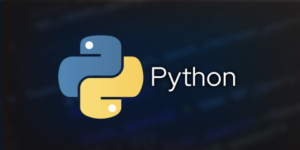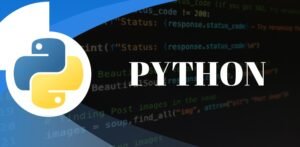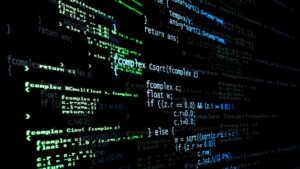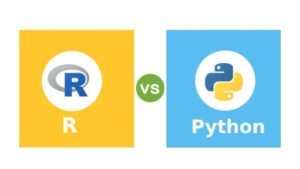You must first understand the distinction between a data scientist’s and a data analyst’s jobs. The two job functions’ cross-correlations simultaneously blend and diverge. Of course, data scientists do analysis. However, they go beyond simple data analysis by working directly with the data themselves, pulling, cleaning, and analysing enormous volumes of raw data to choose which statistical techniques to use. This means that they go beyond the simple, neatly rectangular Excel spreadsheets. Here is where a solid background in statistics and arithmetic is useful. Have you studied advanced statistics, calculus, and linear algebra in college?
Have you also dealt with large datasets where you have to use Python, R, and SQL (ideally as an advanced practitioner) in addition to the aforementioned mathematical expertise? Do you have any data science projects you can share on GitHub, or have you immersed yourself in a Kaggle project? Have you ever used Hadoop or other sophisticated database management systems? If so, you’ve already laid the groundwork for data science.
If you’re not quite there yet, there is still hope because working as a data analyst can position you to advance into a data science position. Data analysts are comparable to junior data scientists, which is a true statement. The educational requirements are less stringent; a bachelor’s degree in a STEM discipline is typically the minimum need. However, you will still need expertise in Python, R, and SQL (typically at the intermediate level). In contrast, the emphasis is on research design and implementation at the graduate level, particularly for a PhD. As a result, data scientists are research scientists that specialise in creating models, whereas data analysts utilise those models to deliver useful information to the user once they have been validated and proven to be reliable.
You can enroll in a good online Data science training course learn more about Data science. But here are some steps to take if you want to get a job as a Data scientist.
1.Target Your Market Data Scientist
Every sector of the economy has its own set of rules, terminologies, and goals. For instance, the financial services sector may concentrate on machine learning for fraud detection or for anticipating changes in a certain market, such as Forex, commodities, real estate, etc. Additionally, knowledge of DRG codes, the ICD-10, clinical risk adjustment, and health economics research methodologies are prerequisites for a data scientist working in the U.S. healthcare sector, which is required to adhere to HIPAA regulations. Here’s another area for introspection:
- Do you have any formal training or relevant work experience in a particular field?
- Where might there be points of contact between the two separate industries if you have experience in another one?
- Can you picture yourself utilising the data from that industry on a daily basis? Or are you more interested in working across a variety of industries, as a contracting or freelancing job would allow?
- Exist training programs or certifications you may take to prove your knowledge if you’re interested in a field for which you have little to no experience.
2.Preparing Your Resume
The ability to pay close attention to even the smallest details is one of a data scientist’s defining traits; this quality should be prominently highlighted on your resume. You must combine your data science knowledge and abilities with the qualifications listed in the job ad. For instance, if you’ve worked in or conducted research in the healthcare industry and are looking for a data science position in the financial services industry, highlighting your familiarity with regulatory compliance is a good way to connect the two. The key competencies to emphasise are not a secret; they appear in nearly every job posting for a data scientist and in practically every data science blog or article:
- Expertise in SQL/Python/R
- STEM graduate degree or Bachelor’s degree plus x number of years of experience
- Data mining
- Familiarity with Big Data platforms
- Data visualisation
- Good to excellent interpersonal skills (you’ll be communicating your findings to different stakeholders)
- Understanding of the target industry (g., pharma, real estate, cybersecurity, retail, supply chain management, etc.)
While there is a dearth of data scientists who completely fit an employer’s job description, there is no dearth of individuals who wish to become data scientists but have glaring gaps in one or more of the necessary subject areas. You must get past the human resources gatekeeper (which could be a real person or a machine learning system) if you apply through Indeed or another job aggregator. Another thing to keep in mind is to check your resume for spelling and grammar mistakes.
As an alternative, a qualified resume writer may assist you in creating a more impressive resume while also making sure there are no typos, etc.
3.Don’t Overlook the Power of LinkedIn
For many people, LinkedIn serves as the modern-day resume. Recruiters do look over applicant profiles and get in touch with them personally. Build up your LinkedIn network. Make sure you have a suitable professional photo. Continue learning and update your profile with any academic honours or individual data science endeavours. Think of this as your networking and professional social media marketing. Additionally, you can get assistance from a person who focuses on LinkedIn profiles. But whether you do it yourself or hire someone, you shouldn’t disregard this self-promotional outlet.
4.When It’s Time to Interview
Here, extra outside elements enter the picture. Every prospective employer will have their own procedure for figuring out whether you are capable of doing what you say. Many require you to respond to statistical questions as part of their proof of work requirements. These shouldn’t be simple questions from Statistics 101. They could also inquire as to when and how you applied a certain statistical technique to a particular issue.
Conclusion
You can learn more about Data science by checking out the Data science training available online.






























